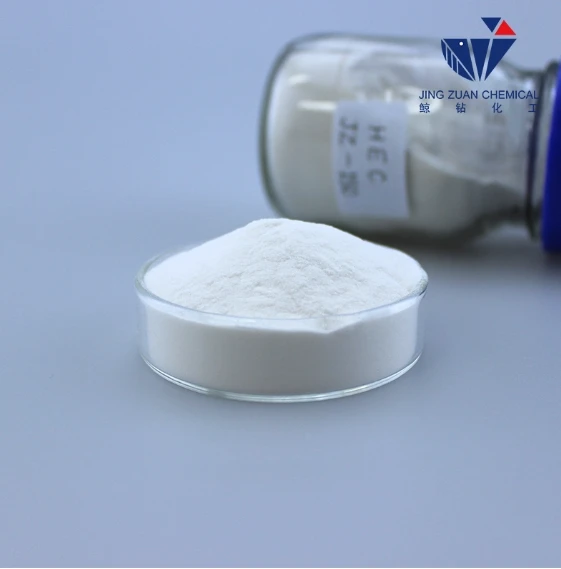
Oktoba . 12, 2024 09:37 Back to list
Investigation of HPMC Gelation Temperature for Enhanced Application in Pharmaceutical Formulations
The Gelation Temperature of HPMC Understanding Its Importance and Applications
Hydroxypropyl Methylcellulose (HPMC) is a widely used polymer derived from cellulose, renowned for its versatility in various industries, including pharmaceuticals, food, and cosmetics. One of the most critical properties of HPMC is its gelation temperature, a parameter that significantly affects its performance and applications. Understanding the gelation temperature of HPMC can provide insights into how it can be effectively utilized in different formulations.
What is HPMC?
HPMC is a semi-synthetic polymer that acts as a thickening agent, emulsifier, and film-forming agent. It is soluble in water and forms a gel upon heating under certain conditions. Comprising hydroxypropyl and methyl groups, HPMC exhibits unique rheological properties that make it suitable for many applications. Due to its non-toxic nature, it is often used in food products, pharmaceuticals, and cosmetics, where consistency and stability are paramount.
Gelation Temperature Definition and Significance
The gelation temperature of HPMC refers to the specific temperature at which the solution transitions from a liquid state to a gel-like state. This phase transition is crucial as it influences the texture, viscosity, and overall behavior of HPMC in various applications. The gelation process is influenced by factors such as concentration, molecular weight, and the degree of substitution of the methyl and hydroxypropyl groups.
Understanding the gelation temperature is essential for formulating products that require specific textural properties. For instance, in the pharmaceutical industry, HPMC is often used in controlled-release drug formulations. The gelation temperature must be carefully controlled to ensure that the drug is released at the desired rate and under the intended conditions.
Factors Affecting Gelation Temperature
Several factors influence the gelation temperature of HPMC, which can be tailored to meet specific application needs
1. Concentration As the concentration of HPMC in a solution increases, the gelation temperature tends to rise. This property allows for the customization of textures in food products or drug formulations.
2. Molecular Weight Higher molecular weight HPMC generally results in a higher gelation temperature. This is due to the increased chain entanglement in the solution, which affects the formation of the gel network.
hpmc gelation temperature

3. Degree of Substitution The ratio of hydroxypropyl to methyl groups in HPMC affects its solubility and gelation behavior. A higher degree of hydroxypropyl substitution typically lowers the gelation temperature, making it more suitable for specific applications.
4. pH and Ionic Strength The pH of the solution and ionic strength can impact the gelation temperature, particularly in formulations where HPMC interacts with other ingredients. Adjusting these parameters can optimize the gelation profile for specific uses.
Applications of HPMC Based on Gelation Temperature
In the pharmaceutical industry, HPMC is used in a variety of applications, including
- Controlled Release Systems HPMC’s gelation temperature can be exploited to create matrices that control the release kinetics of drugs, ensuring a consistent therapeutic effect over an extended period.
- Formulation of Suspensions The ability of HPMC to form gels at specific temperatures allows for the stabilization of suspensions, preventing sedimentation and ensuring uniformity in drug delivery.
In the food industry, HPMC is used in the formulation of
- Low-Calorie Food Products As a thickener and stabilizer, HPMC helps in creating desirable textures without adding unnecessary calories, catering to health-conscious consumers.
- Plant-Based Alternatives HPMC functions as a binder and texturizer in plant-based meat alternatives, providing the necessary structure and mouthfeel that consumers expect.
Conclusion
The gelation temperature of HPMC is a pivotal property that significantly influences its versatility across multiple industries. By understanding and controlling this parameter, manufacturers can create products tailored to specific needs, enhancing both functionality and consumer satisfaction. As research continues to explore the potential of HPMC, its applications are likely to expand even further, solidifying its role as an essential ingredient in modern formulations. Whether in pharmaceuticals, food, or cosmetics, the importance of gelation temperature cannot be overstated, and its implications will continue to be a focal point in the development of innovative products.
-
The Widespread Application of Redispersible Powder in Construction and Building Materials
NewsMay.16,2025
-
The Widespread Application of Hpmc in the Detergent Industry
NewsMay.16,2025
-
The Main Applications of Hydroxyethyl Cellulose in Paints and Coatings
NewsMay.16,2025
-
Mortar Bonding Agent: the Key to Enhancing the Adhesion Between New and Old Mortar Layers and Between Mortar and Different Substrates
NewsMay.16,2025
-
HPMC: Application as a thickener and excipient
NewsMay.16,2025
-
Hec Cellulose Cellulose: Multi functional dispersants and high-efficiency thickeners
NewsMay.16,2025







